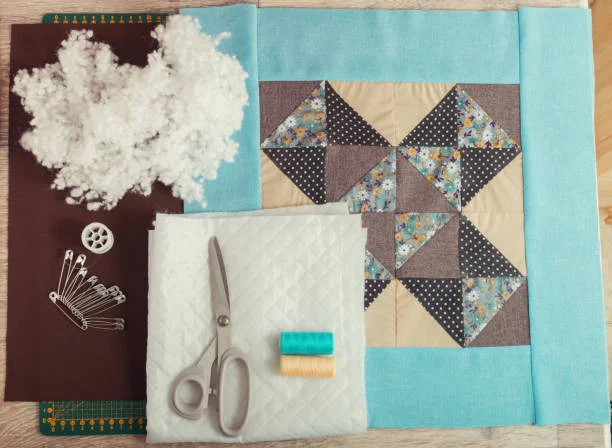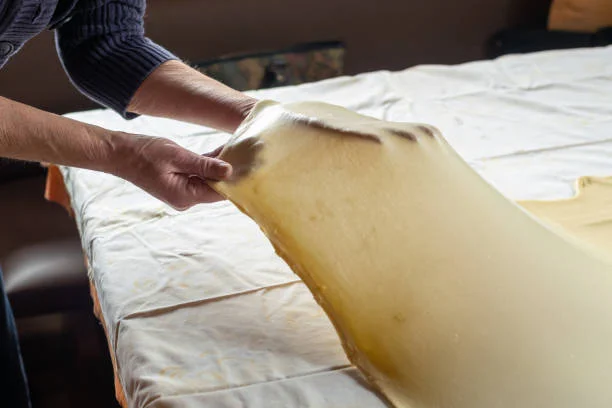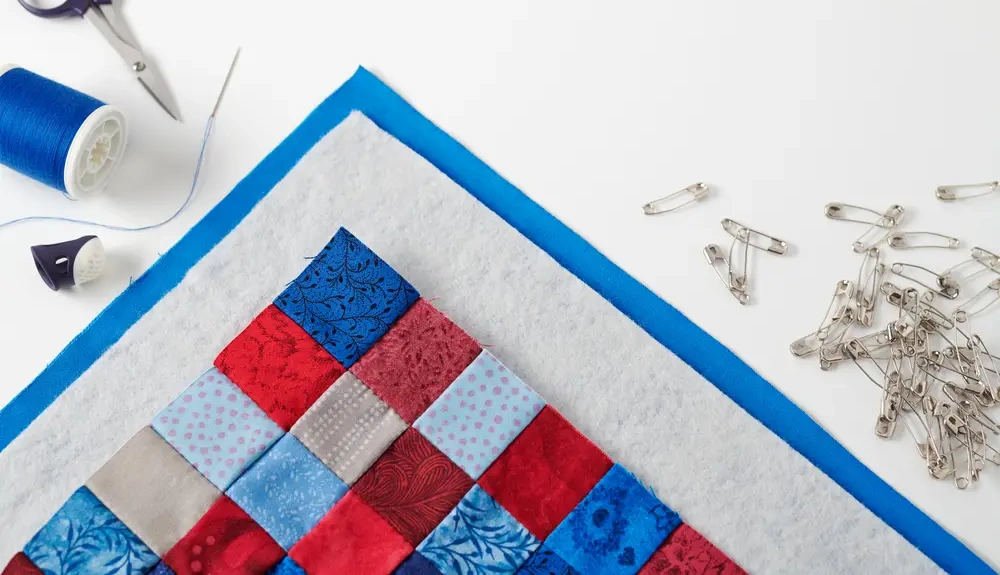You might wonder if using fleece as quilt batting actually works. The answer is yes—it’s not only possible but practical! Fleece brings warmth and a soft touch to your quilt projects. Many quilters love using fleece because it’s easy to find and budget-friendly.
You can even repurpose old fleece blankets. F&A stands out as a trusted name for quality fleece fabrics, blending tradition and innovation. Whether you’re just starting or have a few quilts under your belt, you’ll find that fleece opens up new creative options for batting and backing.
Key Takeaways
- Fleece adds warmth and softness to quilts, making them cozy and comfortable for chilly nights.
- Fleece is easy to find, budget-friendly, and you can even reuse old fleece blankets for batting.
- Using the right tools and techniques, like a walking foot and proper basting, helps manage fleece’s stretch and thickness.
- Pre-washing fleece prevents shrinkage and keeps your quilt looking good after many washes.
- Finishing your quilt with neat binding and careful sewing gives it a polished, durable look.

Benefits of Using Fleece as Quilt Batting
Warmth and Softness
When you choose fleece for your quilt, you get a cozy layer that feels great against your skin. Fleece holds in warmth well, making it a solid choice for chilly nights. Studies show that fleece insulations have R values between 0.34 and 0.78, which means they provide moderate warmth.
You might think heavier fleece means more warmth, but that’s not always true. The way you quilt—like using a regular hexagonal pattern—can actually help your quilt keep in more heat.
You’ll also notice how soft fleece feels. Controlled tests measured how much softness fleece adds to different surfaces. For example, folding an infant fleece blanket once can add up to 6.5 mm of softness to a mattress. Fold it twice, and you get even more cushion. Here’s a quick look at the numbers:
| Sleep Surface Type | Added Softness by Fleece (Folded Once) |
|---|---|
| Infant Mattress | 2.3 – 6.5 mm |
| Adult Mattress | 3.3 – 4.6 mm |
So, if you want a quilt that feels plush and gentle, using fleece as quilt batting is a smart move.
Cost and Accessibility
You don’t have to search far to find fleece. Most fabric stores carry it, and you can even repurpose old fleece blankets for your batting. Here’s why fleece stands out:
- Fabric stores stock plenty of fleece alongside quilting cottons.
- Polyester fleece is easy to find and often more available than natural fiber fabrics.
- You can save money by using fleece, especially if you use recycled materials.
F&A makes it even easier by offering a wide range of fleece options, including eco-friendly choices and custom designs. You get quality and convenience in one place.
Durability and Care
Fleece is tough. It stands up to regular use and washing, so your quilt stays looking good for a long time. You’ll find that fleece resists pilling and keeps its shape, even after many trips through the laundry. F&A’s commitment to quality means their fleece fabrics go through strict inspections, so you can trust your quilt will last. Plus, fleece is easy to sew, which makes your quilting process smoother from start to finish.
Tip: Fleece is a bit heavier than traditional batting, so your finished quilt may feel more substantial. Many quilters love this extra weight for added comfort.
Materials and Tools for a Quilt with Fleece
Choosing the Right Fleece

Picking the right fleece makes a big difference in your quilt project. You’ll find two main types: regular fleece and microfleece. Regular fleece feels thick and plush, while microfleece is lighter and smoother. Both work well for batting or backing, but your choice depends on how warm and soft you want your quilt to feel.
Here’s a quick comparison to help you decide:
| Batting Type | Benefits | Ideal Uses | Care Tips |
|---|---|---|---|
| Regular Fleece | Warm, plush, easy to find | Bed quilts, throws, fleece-backed quilt | Machine wash, tumble dry |
| Microfleece | Lightweight, smooth, less bulky | Baby quilts, summer quilts | Gentle wash, air dry |
You can use new fleece from the fabric store or repurpose a clean fleece blanket. Many quilters love using fleece blankets for batting because they’re affordable and easy to cut to size.
Tip: Think about how you’ll use your quilt with fleece. If you want a lighter feel, go with microfleece. For extra warmth, regular fleece is your friend.
Other Essential Supplies
You’ll need a few more tools to make your quilt come together smoothly:
- Rotary cutter and self-healing mat for straight, clean cuts
- Quilting ruler for measuring fabric pieces
- Sharp fabric scissors
- Quilting pins or spray adhesive to hold layers in place
- Sewing machine with a walking foot (helps feed thick layers evenly)
- Quality thread that matches your fabric
- An iron and an ironing board for pressing seams
These supplies help you handle fleece, which can stretch or shift as you sew. Using the right tools makes your project easier and your results neater.
F&A Fabric Options
F&A offers a huge selection of fabrics for every quilting need. You can choose from cotton, flannel, linen, polyester, and blends. Their collection includes quilting cotton, pre-quilted fabrics, baby quilt fabrics, and patchwork fabrics.
You’ll find fabrics in different widths and patterns, so you can match your style and project size.
- F&A’s fabrics come with options for bulk buying or by the yard.
- You can request sample swatches to check color and feel before you buy.
- Customization services let you create unique designs for your quilt.
- F&A follows eco-friendly practices, using sustainable materials and ethical sourcing.
- Certifications like OEKO-TEX® and GOTS show their commitment to safe, responsible fabric production.
- Customer reviews praise F&A for quality, selection, and service.
If you want to make a fleece-backed quilt or try something new, F&A’s in-house collection gives you plenty of choices. Their fabrics work well for both batting and backing, making your quilt project simple and fun.
Step by Step Guide
Preparing Fleece and Fabrics
Getting your materials ready is the first step to a successful quilt with fleece. Start by washing and drying your fleece and other fabrics. This helps prevent shrinkage later. Lay out your fleece and check for any wrinkles or folds. Use a rotary cutter and ruler to cut your fleece and fabric pieces to size.
If you need to piece together smaller sections of fleece, leave a larger seam allowance—about 1 inch works well. This extra space makes it easier to sew the pieces together and keep seams flat.
When you press seams, always test your iron on a scrap of fleece first. Fleece can melt if the iron is too hot. Place a Teflon sheet, parchment paper, or a muslin cloth between the iron and the fleece.
Open the seams and press gently. If you want extra stability, use fusible batting tape along the seams. This keeps everything flat and manageable, which makes quilting much easier. The Quilting Zone recommends these steps to help you manage bulk and keep your fleece smooth.
Tip: Always handle fleece gently when cutting and pressing. This keeps the fibers soft and prevents stretching.
Layering and Basting
Now it’s time to build your quilt sandwich. Lay your backing fabric wrong side up on a large, flat surface. Smooth out any wrinkles. Cut your fleece batting and backing fabric at least four inches larger than your quilt top on all sides.
Center the fleece over the backing, then place your quilt top over the fleece, aligning the edges carefully.
Proper layering is key for a neat finish. Expert demonstrations from Craftsy.com show that you should trim and press seams to reduce bulk, especially at the corners. For a fleece-backed quilt, make sure the fleece layer stays smooth and even.
Basting holds all the layers together before you start quilting. You have several options:
- Pin Basting: Use large safety pins every 4-6 inches across the quilt.
- Thread Basting: Sew long, loose stitches by hand through all layers.
- Spray Basting: Lightly spray a temporary adhesive between layers for quick assembly.
- Fusible Basting: Use fusible batting tape or webbing to secure edges.
When basting, start in the center and work outward. This helps prevent shifting or puckering. If you use spray or fusible basting, always protect your work surface and follow the product instructions. For larger quilts, work in sections and keep layers as flat as possible.
Note: Basting is especially important when using fleece as quilt batting. It keeps the layers from shifting and helps you achieve a smooth, professional look.
Quilting Techniques
You’re ready to quilt! Fleece is easy to sew, but it can stretch, so use a walking foot on your sewing machine. This foot helps feed all the layers evenly. Choose a simple quilting pattern, like straight lines or gentle curves. These designs work well with fleece and help keep the quilt soft and flexible.
Set your stitch length a little longer than usual—about 3.0 mm. This prevents puckering and lets the needle move smoothly through the fleece. If you want to try free-motion quilting, practice on a scrap first. Fleece can be a bit slippery, so go slowly and steadily.
If you’re using fleece as quilt batting, you’ll notice the quilt feels thicker and warmer. You can quilt as much or as little as you like, but more quilting will help hold the layers together and prevent shifting over time.
Callout: Don’t forget to check your thread tension. Fleece can be bulky, so adjust your machine settings if needed for even stitches.
Binding and Finishing
Finishing your quilt gives it a polished look. Fleece does not fray, so you can leave the edges raw, but binding adds a classic touch and extra durability. Use a walking foot to attach the binding for even feeding. Start sewing the binding on the back of the quilt, then wrap it around to the front and finish with a neat topstitch.
Use a 1/4-inch seam allowance for the binding. Fold the corners carefully to create sharp, mitered edges. Press the binding out from the edge before wrapping it to the front. Match your thread color to the binding for a clean finish. Tools like Wonder Clips or a stiletto help hold the binding in place as you sew.
Professional guides recommend avoiding bulky folded hems, as they can feel stiff. Instead, use seam styles like faux flat-felled or double top-stitched seams for a smooth finish.
Polyester thread works best with fleece for strength and easy care. When pressing the binding, use your fingers or a low-heat iron to avoid melting the fleece.
Many quilters enjoy hand-stitching the final edge of the binding for a personal touch.
Tutorials from the Quilt Finishing Academy and experts like Eileen Fowler show how to choose the right binding width, miter corners, and join ends seamlessly. These tips help you achieve a professional finish and make the process enjoyable.
Tip: Take your time with binding. A neat edge makes your quilt stand out and last for years.
Tips & Troubleshooting
Handling Stretch and Shifting

Fleece can stretch and shift while you work, but you can keep your quilt layers stable with a few smart tricks. Start by using spray basting or plenty of pins to hold everything in place.
Magnetic hoops, like those from MaggieFrame or Sewtalent, give even tension and grip thick fabrics well. These hoops make it easier to keep your fleece flat and smooth.
You can also use heavyweight stabilizers, such as Heavy Cut Away or PolyMesh Cut Away, under your fleece. These stabilizers support the fabric and help prevent distortion. Fusible stabilizers or interfacings work well too, keeping the softness of your quilt while stopping unwanted stretching.
Tip: Try layering a sticky stabilizer on the back and a water-soluble stabilizer on top. This combo keeps stitches crisp and stops the fleece from shifting.
If you want extra warmth, you can use two layers of fleece or combine it with lightweight batting. Just remember, this will make your quilt thicker and heavier.
Preventing Thread Breakage
Here’s a quick checklist to help you:
Thread breakage can slow you down, but you can avoid it with a few simple steps. Always re-thread both the top and bobbin threads if you notice any issues. Insert a new needle and make sure you use the right size for fleece. Adjust your machine’s tension in small steps until your stitches look even.
- Re-thread your machine and check for loose threads in the bobbin.
- Use a new needle and try a different size if needed.
- Adjust thread tension in half-turns for best results.
- Inspect the thread path for any rough spots or burrs.
- Stitch slowly, especially with specialty threads.
Note: F&A’s strict quality control means their fabrics are smooth and reliable, which helps prevent many common sewing problems.
Washing and Shrinkage
You want your quilt to last, so proper washing is key. Fleece resists shrinking, but it’s still smart to pre-wash all your fabrics before you start. This step helps your quilt keep its shape after many washes.
Wash your finished quilt in cold water on a gentle cycle. Tumble dry on low or air dry to protect the fibers. Fleece dries quickly and keeps its softness, so your quilt will stay cozy and fresh.
Callout: F&A inspects every fabric batch, so you can trust your quilt will hold up wash after wash.
Conclusion
You now know how easy and rewarding it is to use fleece in your next quilt. Many quilters love the soft, warm feel and the unique crinkly texture that fleece brings.
You can hide uneven stitches and create a forgiving surface that highlights your quilting designs. Try out F&A fabrics for your next project and see how creative you can get. Have you made a quilt with fleece? Share your tips or stories in the comments below!
FAQ
Can I use fleece for both batting and backing in my quilt?
Yes, you can! Fleece works well as both batting and backing. You get extra warmth and a super soft feel. Just remember, your quilt will feel thicker and heavier.
Do I need to pre-wash fleece before quilting?
You should pre-wash fleece. This step helps prevent shrinkage and removes any factory finishes. Your quilt will keep its shape and softness after washing.
What needle and thread work best with fleece?
Use a universal or ballpoint needle, size 90/14 or 80/12. Polyester thread works great with fleece. You get smooth stitches and fewer breaks.
How do I stop fleece from stretching while sewing?
Pin or spray-baste your layers well. Use a walking foot on your sewing machine. Sew slowly and avoid pulling the fabric. This keeps your fleece flat and smooth.
Can I quilt by hand with fleece batting?
Absolutely! Hand quilting with fleece feels easy. Use larger stitches and a strong needle. Fleece gives you a soft, forgiving surface for your stitches.
